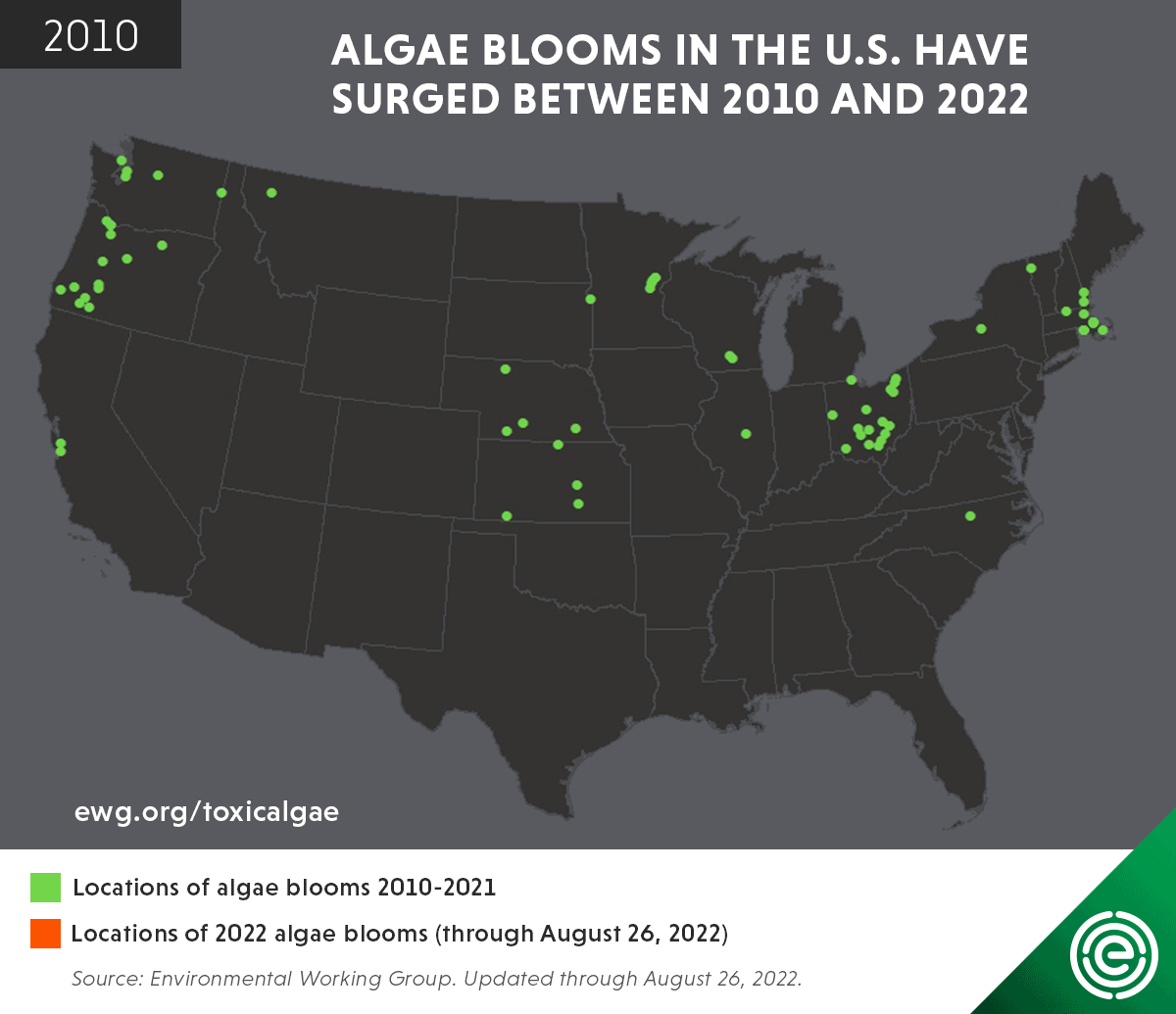Algal blooms have gotten more widespread and more severe in the last decade. Algal blooms thrive in warmer waters, and with water warming earlier in the spring and staying warm longer into the fall, the algal bloom season is also extended. In addition, water resources not previously impacted can be in danger of experiencing algal blooms. But, without nutrients, particularly phosphorus, algae cannot thrive.
Wastewater treatment plants are one source providing the nutrients that drive algae growth. By removing phosphorus from wastewater, utilities can help protect their community’s water resources from potentially deadly algal blooms.
Algal blooms – big headlines, big headaches
Big blooms, like the one that turned San Francisco Bay brown this summer, make big headlines. But even in smaller communities, algal blooms are a big deal. Potentially toxic blooms must be analyzed and managed. If toxic, these blooms can cause illness and even death in humans, livestock and pets that come into contact with it, especially if they drink the water. With these blooms occurring in warm weather, when people are most likely to engage in water activities, health officials take them very seriously. Toxic algal blooms can cause officials to close lakes and beaches to recreation and fishing. Even in the oceans, like San Francisco Bay or the Gulf of Mexico, toxins and depleted oxygen levels caused by blooms can poison fish and shellfish beds, leading to fish kills and loss of revenue for the fishing industry. Algal blooms are literally a blight on a community, endangering health, impacting recreation, fishing, and tourism as well as impacting reservoirs and threatening drinking water supplies.

Phosphorus driven algal blooms bring big costs
Analysis by the Environmental Working Group estimates that communities across the United States have spent more than $1 billion since 2010 dealing with potentially toxic algal blooms in drinking water reservoirs, lakes, rivers, bays, and estuaries. The toxins don’t break down easily, making treatment options complex and expensive. So, if a drinking water source is impacted, as happened to Toledo, Ohio in August of 2014, the community often must rely upon bottled water until the bloom dissipates and the water system is flushed. Given the cost and the health risks, it is easy to understand why communities try to reduce the likelihood of blooms, and most look first to nutrient control at wastewater treatment plants.
Though agriculture also contributes to algal blooms, wastewater treatment plants are often first on the list of mitigation efforts.
Articles about algal blooms almost always lay blame at least in part on wastewater plants. Following the San Francisco bloom, scientists mentioned the 40 wastewater plants that drained into the bay. Specifically, focus is on phosphorus as the nutrient known to be the limiting factor in contributing to algal bloom proliferation. Controlling phosphorus levels can prevent algal blooms.
Wastewater plants are a main part of the solution, protecting water resources and communities.
To protect communities and their water resources from potentially toxic algal blooms, regulatory agencies are imposing very low phosphorus limits on wastewater treatment plants discharging into algal prone watersheds. These low limits are extremely difficult to achieve without chemical precipitation of the phosphorus.
For phosphorus removal in wastewater, coagulant choice makes a difference in the cost, reliability, and operational ease.
Precipitation with traditional iron or aluminum-based coagulants is not efficient at achieving low concentrations of total phosphorus. They are not cost-effective due to the large quantities required to achieve low limits and because they produce large quantities of fluffy sludge that is difficult to dewater and expensive to landfill. In addition, the large quantities and high acidity of these coagulants can disrupt the alkalinity needed to control the other algal boosting nutrient, nitrogen.
Neo WaterFX controls phosphorus to prevent algal blooms and protect communities.
WaterFX cost-effectively achieves low P levels to prevent algal blooms and protect community water resources. The WaterFX required dose is much less and has lower acidity than traditional coagulants, so it does not impact the alkalinity and nitrification is not affected. In addition, less sludge is produced and is a denser, drier sludge, that is easier to dewater and less expensive to landfill. Requiring little equipment, feeding WaterFX frequently requires little to no capital expense.
Algal blooms will continue to threaten precious water resources.
With a warming climate, algal blooms will continue to endanger vital water resources. But with WaterFX, your wastewater utility can be part of the solution with an easy to implement, cost-effective preventative measure to remove phosphorus, reduce blooms and protect your community.
Contact us and find out how we can help you protect your community from harmful algal blooms and improve your overall operations.

Environmental Working Group interactive graphic for locations of algal blooms in the continental United States from 2010 to 2021, and for 2022 through August 26, 2022.




